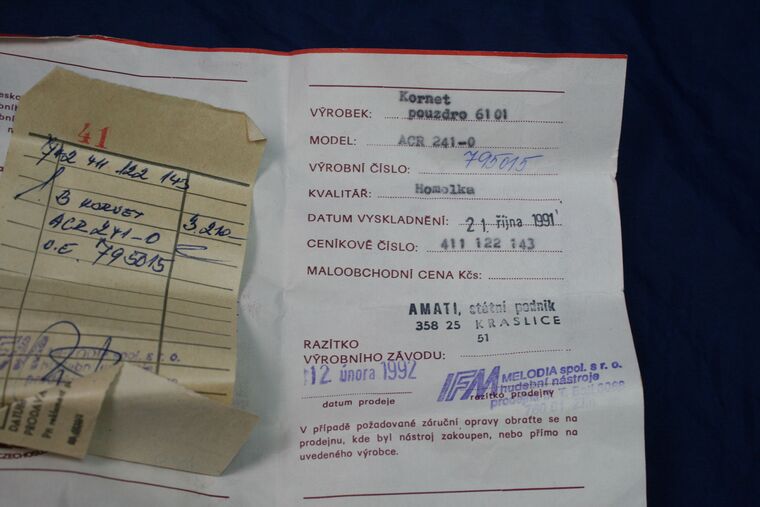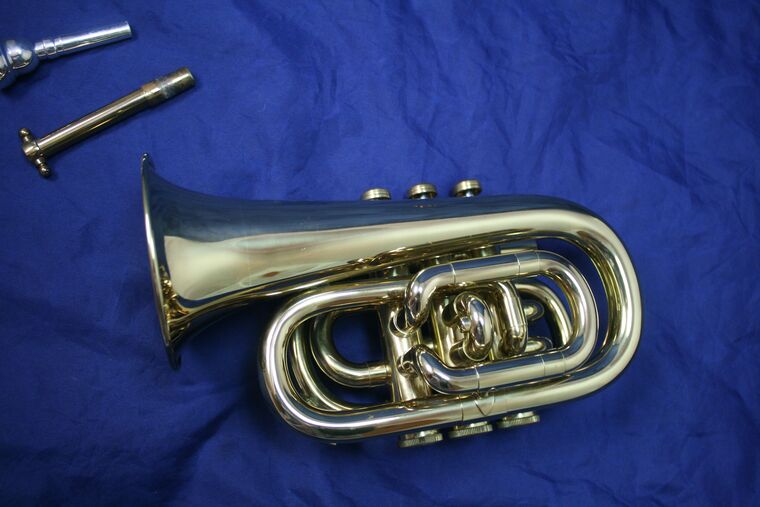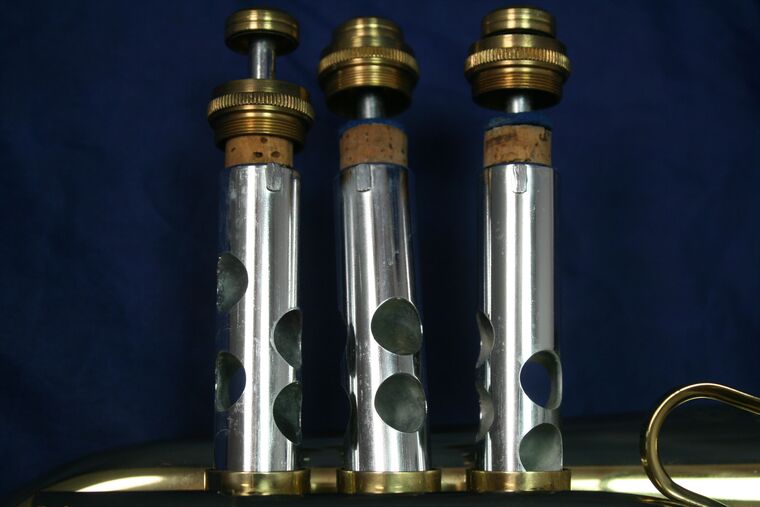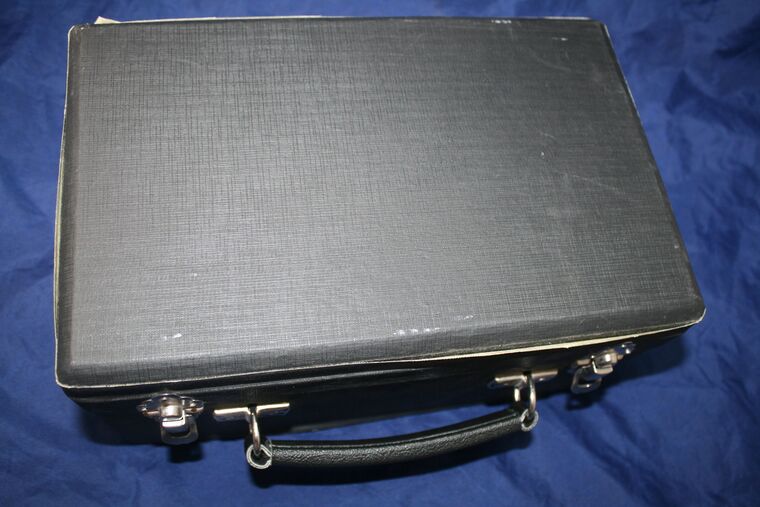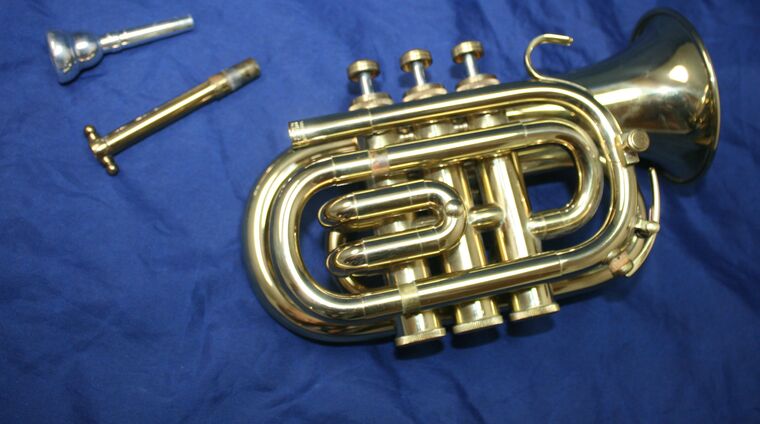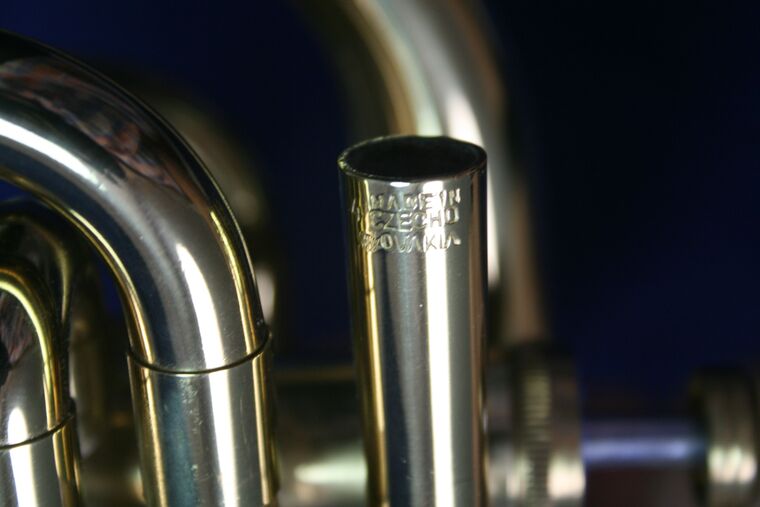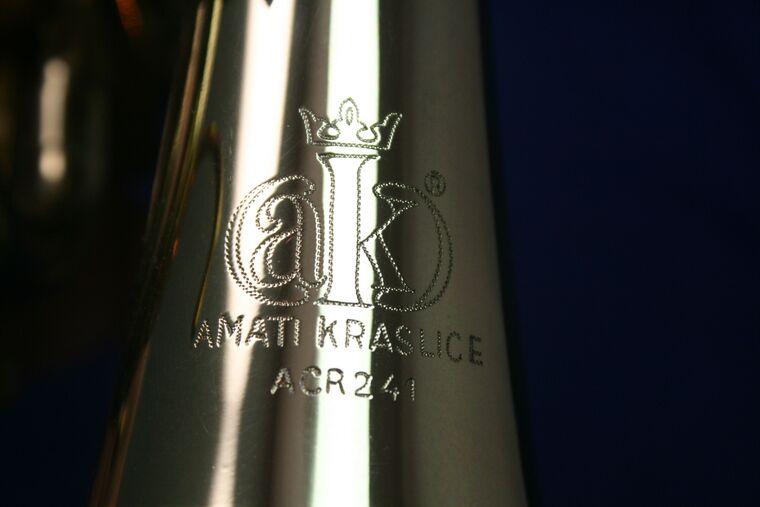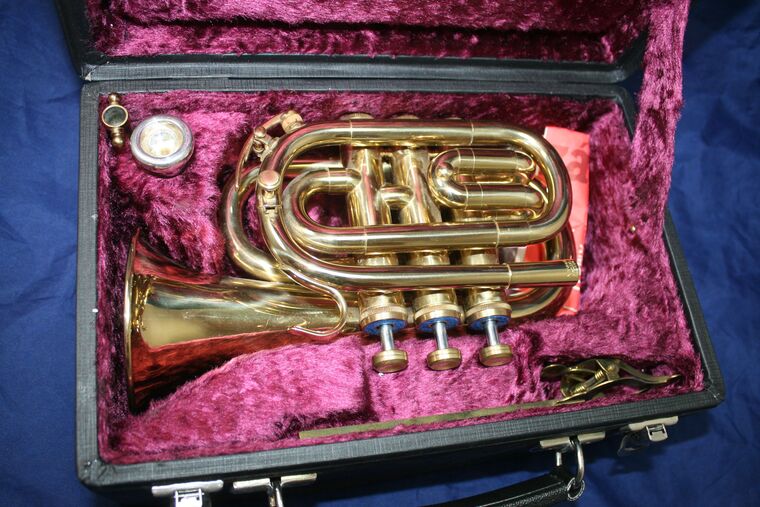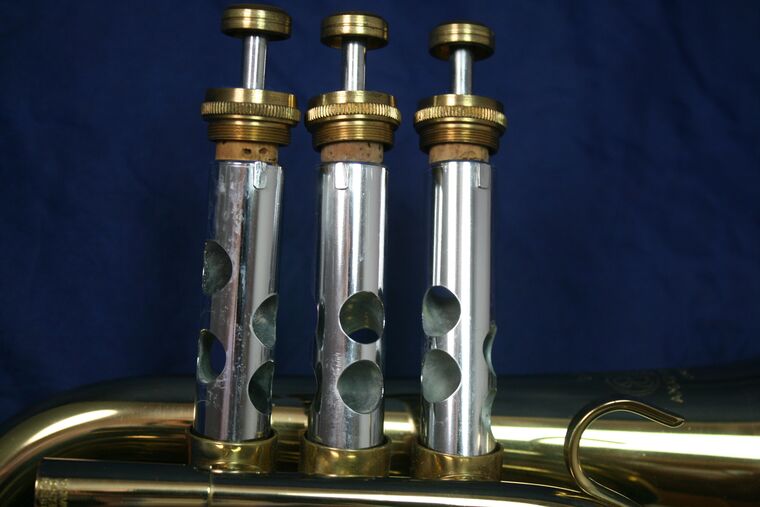@zetka I recently sent some vintage [1950s-60s] Amati mouthpieces out for scanning, and the design of that "2" reminded me of several different models, all stamped 1 or 2, that were radically different...
The other thing was a "7BV" that oddly resembles a hypothetical Schilke 7B5...
Posts made by ConnDirectorFan
-
RE: Amati-Kraslice - the ones we love to hate?posted in Historical Database
-
RE: Amati-Kraslice - the ones we love to hate?posted in Historical Database
@zetka on a similar note, I found this image [originally taken May 2020] showing the piston from my Musica Steyr cornet [Amati 2551 or B-1038, the Connquest/Wonderphone-inspired model] and an Amati Excelent Super [yes, that is how it was spelled], with G3 Meister pistons.
The barrel is slightly different, with the Musica having the guide notch punched out of the top like Conn and in line with the pin, and the G3 having it molded from the bottom across from the pin. Conn, KHS, and Chinese makers had the pin mounted to the mobile portion of the piston, versus Amati [and Schenkelaars] attaching it to the barrel. The Excelent Super was Monel, with the Excelent and other models having Amati's infamous Chromium surface piston.
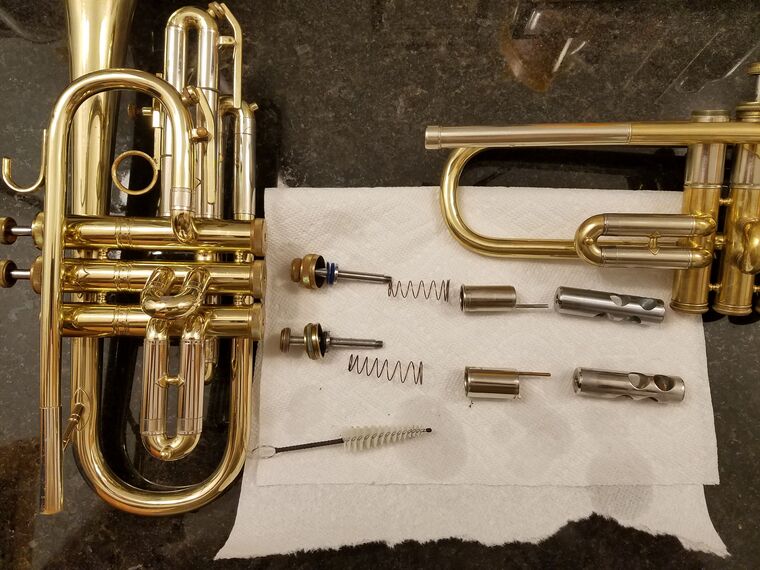
-
RE: Conn & more engineering spec sheet free-for-allposted in Historical Database
@Jolter said in Conn & more engineering spec sheet free-for-all:
@ConnDirectorFan That's very cool, has anything more happened to this initiative?
Since there are a lot of duplicates photos, I assume some manual checking and removing of redundancies could be useful, as would categorizing/systemizing the scans further.
In short, yes, though unfortunately not in a meaningful way. Part of it is my ineptitude, part of it is general coordination difficulty, but it will slowly proceed!
I wish it could have more happening! Just like the collection, it's a mess of fits and starts.
Currently I'm waiting on getting larger size prints - the client/owner dropped off a stack of B/C/D-size prints at a local print shop, who claimed they could scan them. Turns out they did absolutely nothing, while I put together an easel of sorts to photograph them. We're all busy otherwise, so coordination has been difficult.Sorting would definitely be useful. The original objective was "digitize everything so it's not just these fragile sheets", so meaningful organization took a back-seat. Other prints have artifacts due to the scanner [like the wretched RGB-banding when scanning black when in color mode, etc.] so I scanned them in different modes.
Due to the naming convention, often several unique sheets have identical filenames [!!!] since I copied the folder structure of the physical crates themselves...errors and all. When scanning, the new directory caused the app to reset the file name.Because the client/materials-owner wanted tuba and trombone parts primarily, I basically started entering model numbers into Google Drive, then grabbing the results and downloading. Then terms like "tuba", etc.
I suppose a detailed combing with a script, or even a tool like Agent Ransack or Tenorshare to find true duplicates would be in order. I scanned some items multiple times to ensure everything was captured [due to the consumer-grade flatbed scanner], and would potentially want to stitch them into a single sheet-file.
We wanted to use these to create 3D models of each part in modern software, and this could theoretically be automated given the specs and general shape.
-
RE: Amati-Kraslice - the ones we love to hate?posted in Historical Database
@zetka said in Amati-Kraslice - the ones we love to hate?:
@ConnDirectorFan BTW, it seems that the 7DW was still produced lately, I saw them sold for about 40USD on czech Aukro auction server now
(https://aukro.cz/natrubek-pro-trumpetu-amati-7dw-7057773410 ).
Those are with the bottom shape looking like Yamaha MPCs.Are they old stock? When I ordered some pieces from the factory in 2020, it was a veritable hodge-podge of pieces made from the 1980s to 2000s. Some of the heavy Yamaha-style pieces were buffed, others with the satin exterior. Amati definitely are not budging when we try ordering now...!
-
RE: Amati-Kraslice - the ones we love to hate?posted in Historical Database
@zetka Thanks for that! Yes, Amati tool marks are a very common defining feature. The single-number pieces are an absolute mystery, and it seems they used pre-war styling until either using up old stock, or deciding it was time to use a new exterior.
-
RE: Amati-Kraslice - the ones we love to hate?posted in Historical Database
I have to wonder if they started using Klier earlier. I've got a bugle that was made on-order in mid-2020, and it came with a 7C that was unlike any of the heavyweight Amati pieces, except the "AMATI 7C" engraving. It was the same thin engraving seen on the heavy pieces. The blank was Bach-style, but the collar was a round bulge, and the exterior was something like some of the vintage Buescher/Elkhart or Martin/Indiana trumpet pieces from around 1910-1920. I'll have to photo that soon...
@Jolter said in Amati-Kraslice - the ones we love to hate?:
@ConnDirectorFan That's very interesting to hear, that JK are now providing their mouthpieces. So they got out of that business altogether, then.
I never saw their 7EW, but I bought a new 7DW when I visited Praha in 2004 or so. It had a wide rim, which was quite flat, a fairly sharp inner bite and a tiny tiny cup in a heavyweight blank. (Not quite megatone-weight but something like that.) I was coming from a Yamaha 11C4/7C and was hoping for just that little push in endurance/range. The honeymoon was nice. Unfortunately my intonation and tone suffered, and this was when I first discovered my lips are too big to be able to play extremely small sizes. I was young and stupid but a senior section member clued me into that my new mouthpiece was not helping my playing.
(The wide rim promoted some bad habits, too, like I used a lot of pressure those days...)
I passed the MP on to a donation drive, instruments for poor students. Hopefully one of them had thin lips...
Their 7DW cornet piece pre-2000s was...interesting. Brighter sound, but not a "screaming lead" by any margin...! It came straight from the factory wrapped in paper, in a newer Amati box with product code A90 7DW and UPC 8 591278 023119...
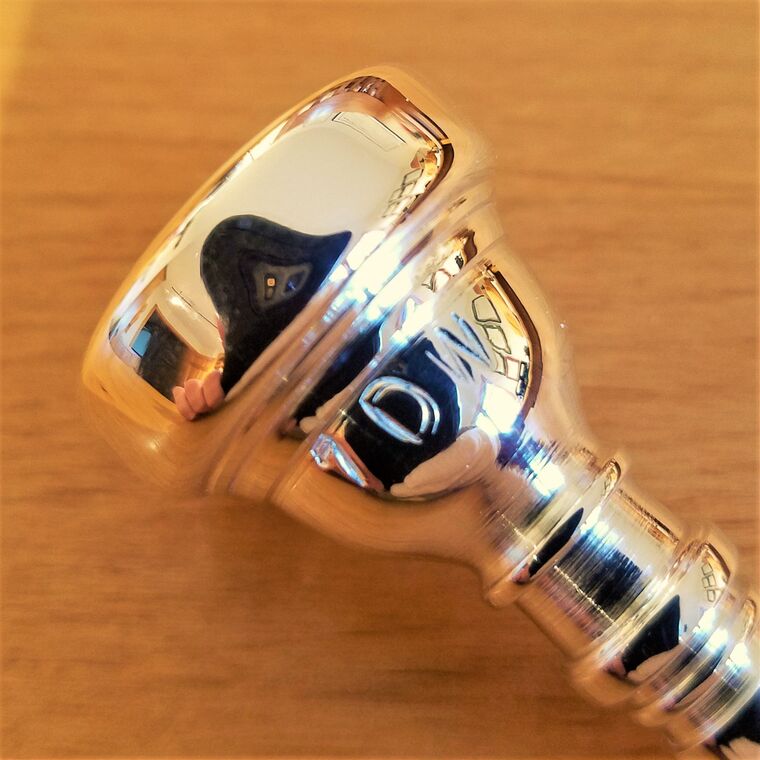
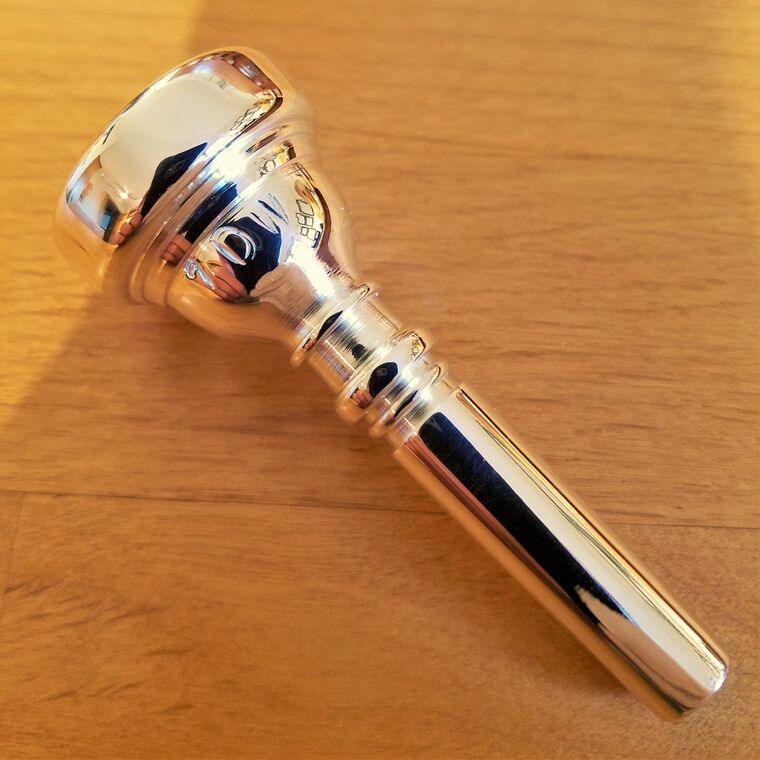
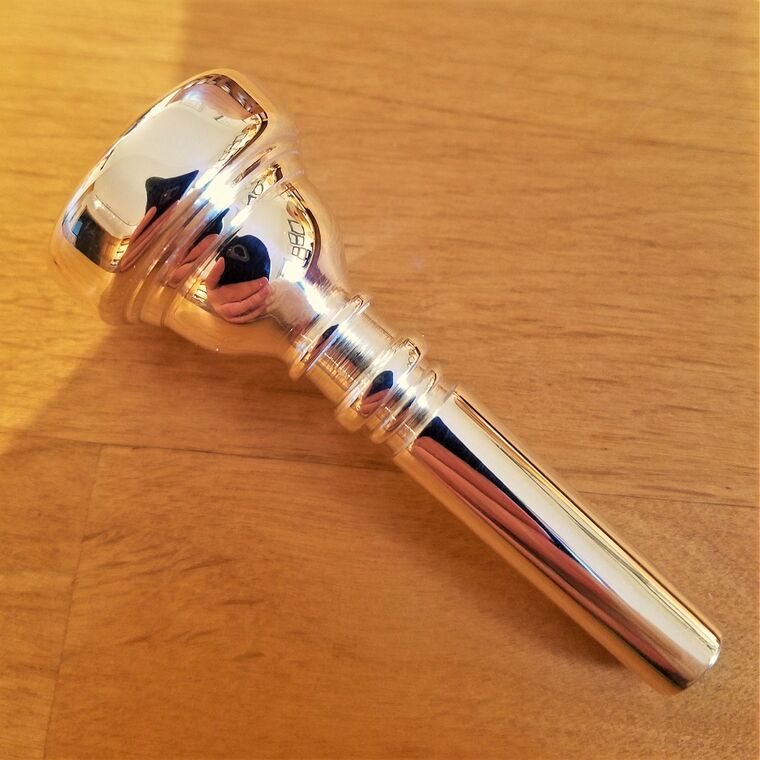
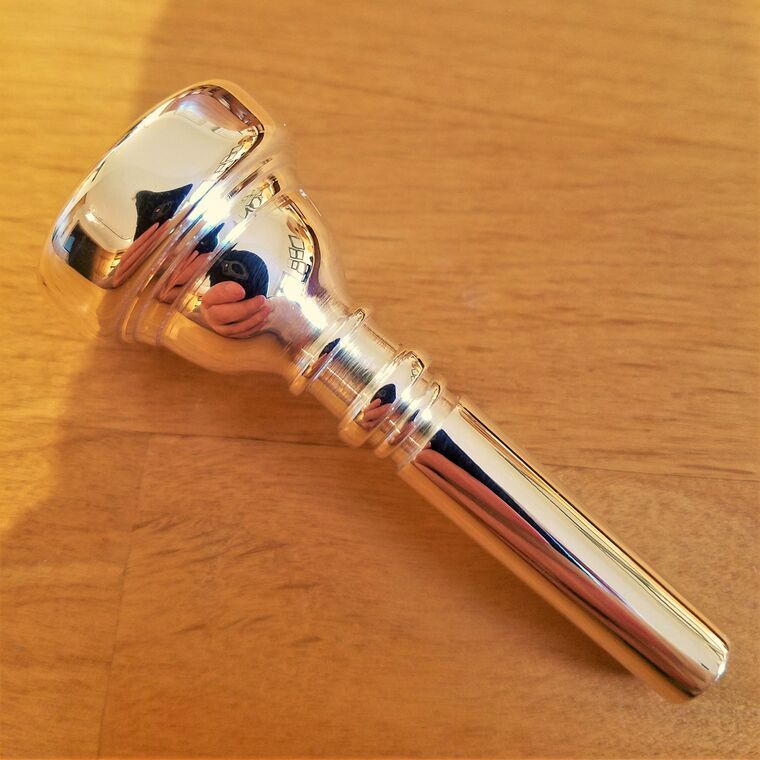
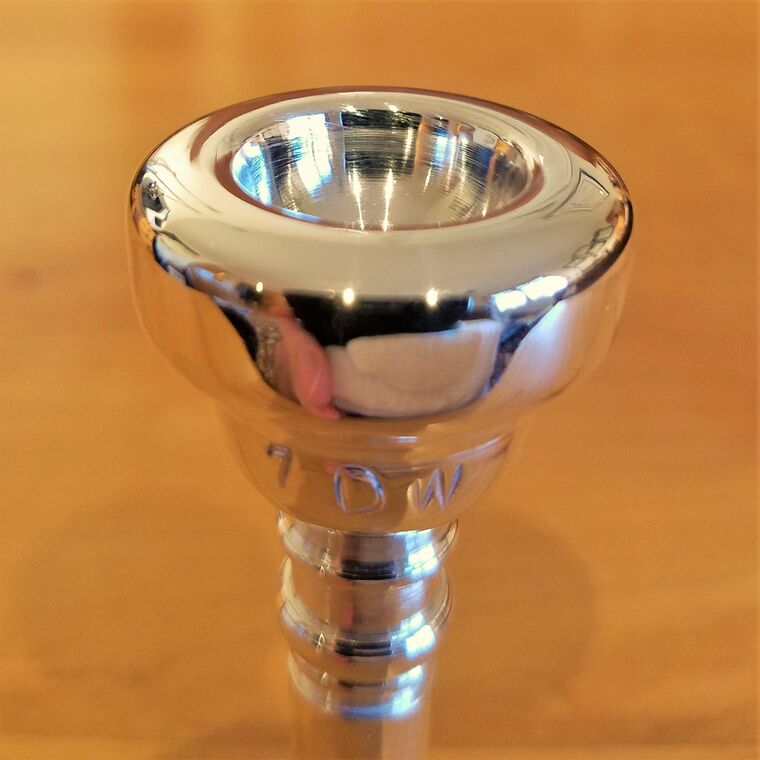
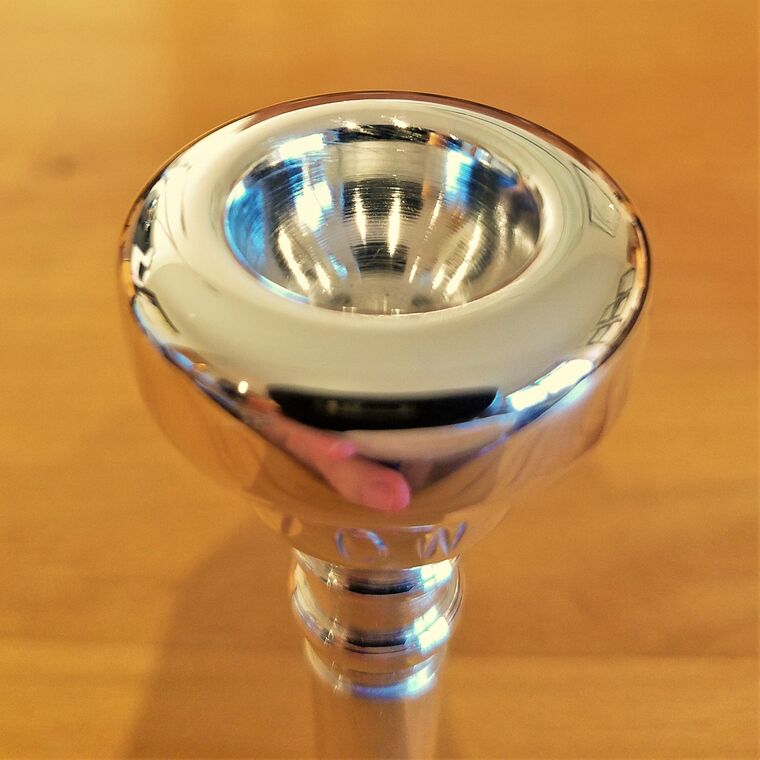
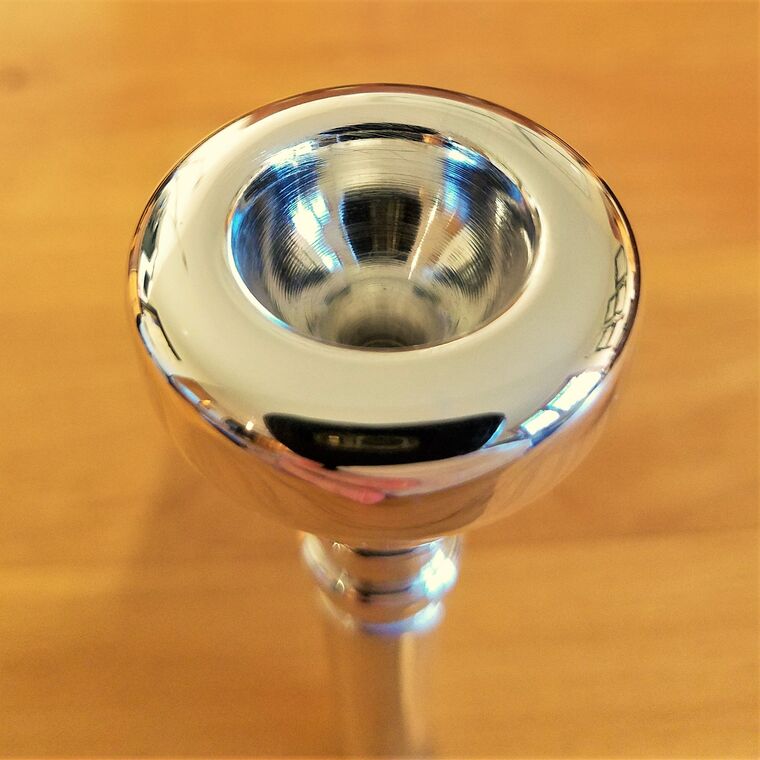
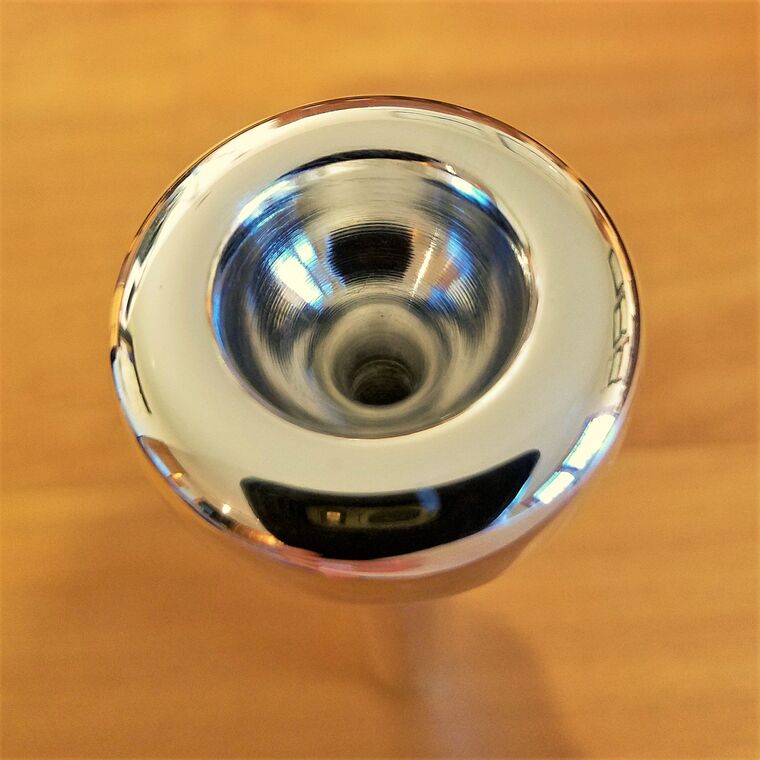
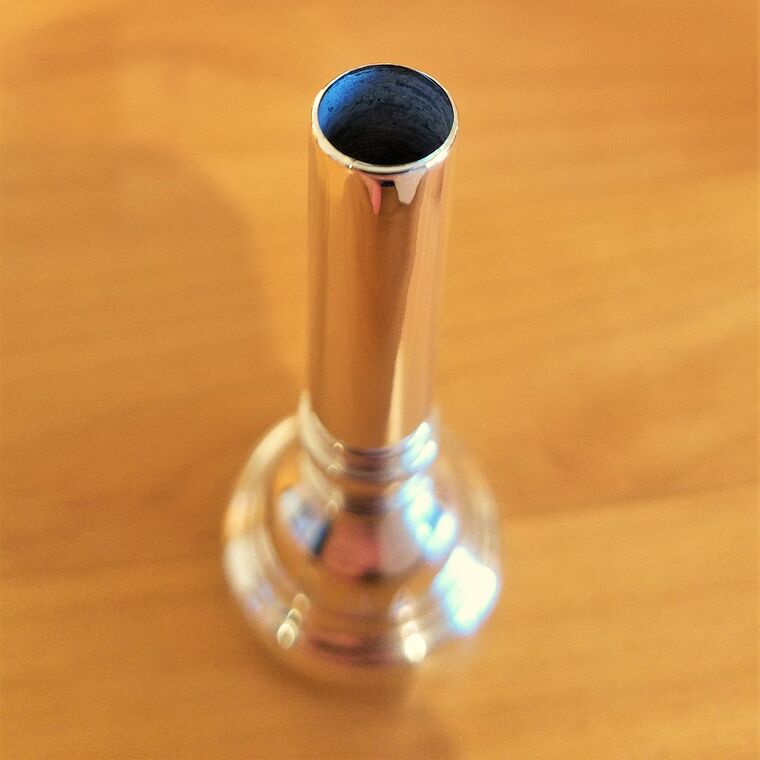
-
RE: Amati-Kraslice - the ones we love to hate?posted in Historical Database
@zetka said in Amati-Kraslice - the ones we love to hate?:
@ConnDirectorFan BTW, the man on the picture left is a well known trumpet (cornet) player, actor Jiří Jelínek. He was very popular in the 60ies and when Louis Armstrong concerted in Prague in 1965, he performed for him in the Semafor theatre. Link is here .
Very neat - thanks! I've seen references to a "Signatone" [sic - Lignatone] Consul trumpet presented to Armstrong at one point as well.
The 1976 catalog has a center-section pic of Dizzy Gillespie [?!] interestingly enough -
RE: Amati-Kraslice - the ones we love to hate?posted in Historical Database
Sadly I've never found anything about Amati mouthpieces beyond the pages you see here, and a chart/table showing specifications of trumpets/cornets from the 1980s - it shows the standard mouthpieces included with different models, but it basically is just the 7C/7E...
They never published a mouthpiece catalog on its own that anyone remembers, and the catalogs I've seen barely discuss them. What you see in the links is everything I've ever found...I'd agree that the rims are flatter than Bach equivalents, though I'd also say they were sometimes very odd - I've encountered 3 or 4 pre-2000 7Cs that have a sharp inner bite, with a rim that slopes downward from there. The rim itself is wide, flat, but slopes down toward the outside! Not especially comfortable.
I've had several other Bach-influenced ones with the same characteristic, except for a few.
I have two 7EW versions, one stamped Czech Republic, the other nothing [just the model]. The model stamp is atrocious, but the rim is extremely flat and broad. The rim bite is not higher than the rest of the rim, and the cup is much tinier and shallower than any 7EW Bach ever made! It's a bit hard to play long-term, but for a useless trick-shot Double High E-flat intro on "Chameleon", it's a neat piece!
The Circe piccolo piece is a bit wide, but still nicely made. It's not nearly as extreme as the 7EW...!
I have photos of the various ones sold, which I'll probably post at some point.I have the 3 and 10 cornet pieces, copied from Bach as well. They're pretty close and are done quite well. The trumpet 10 has a different rim, but still is decent.
As far as the older ones, I've encountered various "MADE IN / CZECHO / SLOVAKIA" models, some with the pre-war serif stamp, most with the post-war sans-serif stamp. Some have the Ⓐ & number stamp, most do not. These often have wide, flat rims and round rim bite, and while not super distinguished or special, still play okay. At some point these weren't considered good enough, so they started explicitly copying other versions. I think the H2W might be a nod to Meister Hablowetz [Hablawetz also...
Rudy Muck pieces are all over the place, possibly due to the licensing arrangements and just plain inconsistency.The newer heavyweight ones are another breed entirely. They're consistent, but the designs changed - the 2000s 7EW has a super-round, super-wide rim like a half-circle cross-section. There is no bite to speak of. The cup is shallow, but it was hard to play - I sold it to a friend who is often overseas, so chances of borrowing or buying it back to have scanned are low. Asking Amati to buy a new one resulted in "Klier makes our current mouthpieces"...so acquiring one is probably out of the question.
The 3 and 10 are different than the older cornet versions, but still respectable.@zetka said in Amati-Kraslice - the ones we love to hate?:
@ConnDirectorFan Unique prospects! I am having some of the Amati trumpet older MPCs, by my amateur feeling they were made more by the older VB flatter rim (my subjective feel). I know some of the unusual ones such as the double cup H2W (something like Selmer Special), but I did not meet the RM1. As far as I have few RMs Made in the USA and Made in England and although they have the same description, they are quite different in size and look (17C,19C and some 18M). Do you have the MPC prospect complete to see it in full? I miss there the some of the standard ones, such as 1, 1C, 1 1/2C etc. I miss there the 7E, 7CW etc. I played them about 40 years ago in the 80s and I am returning to them to find, that they are really not bad sounding.
-
RE: Amati-Kraslice - the ones we love to hate?posted in Historical Database
Another interesting piece - this "R1M" imitation of some Rudy Muck mouthpiece, which is visible in the 1963 Lignatone catalog
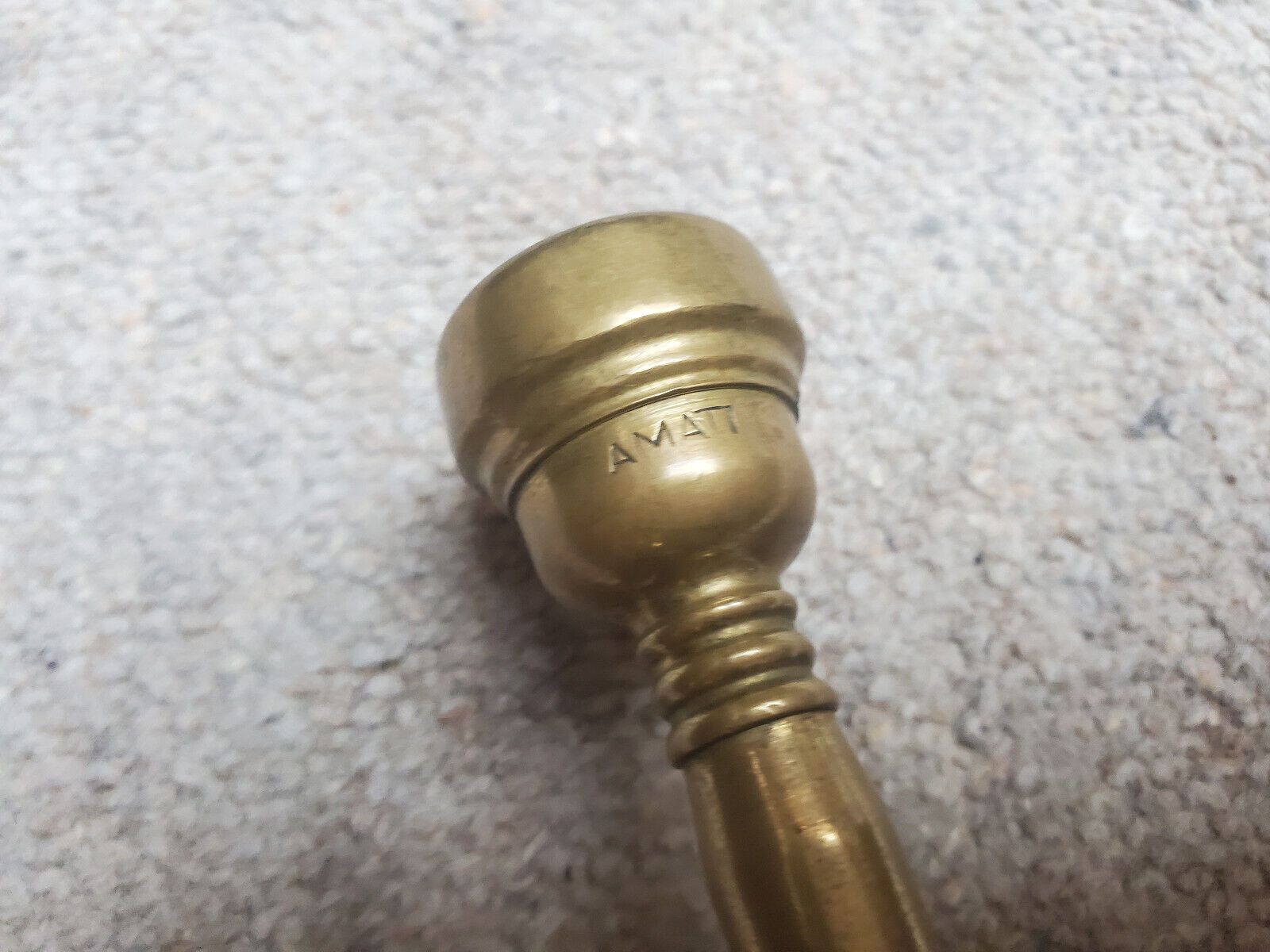
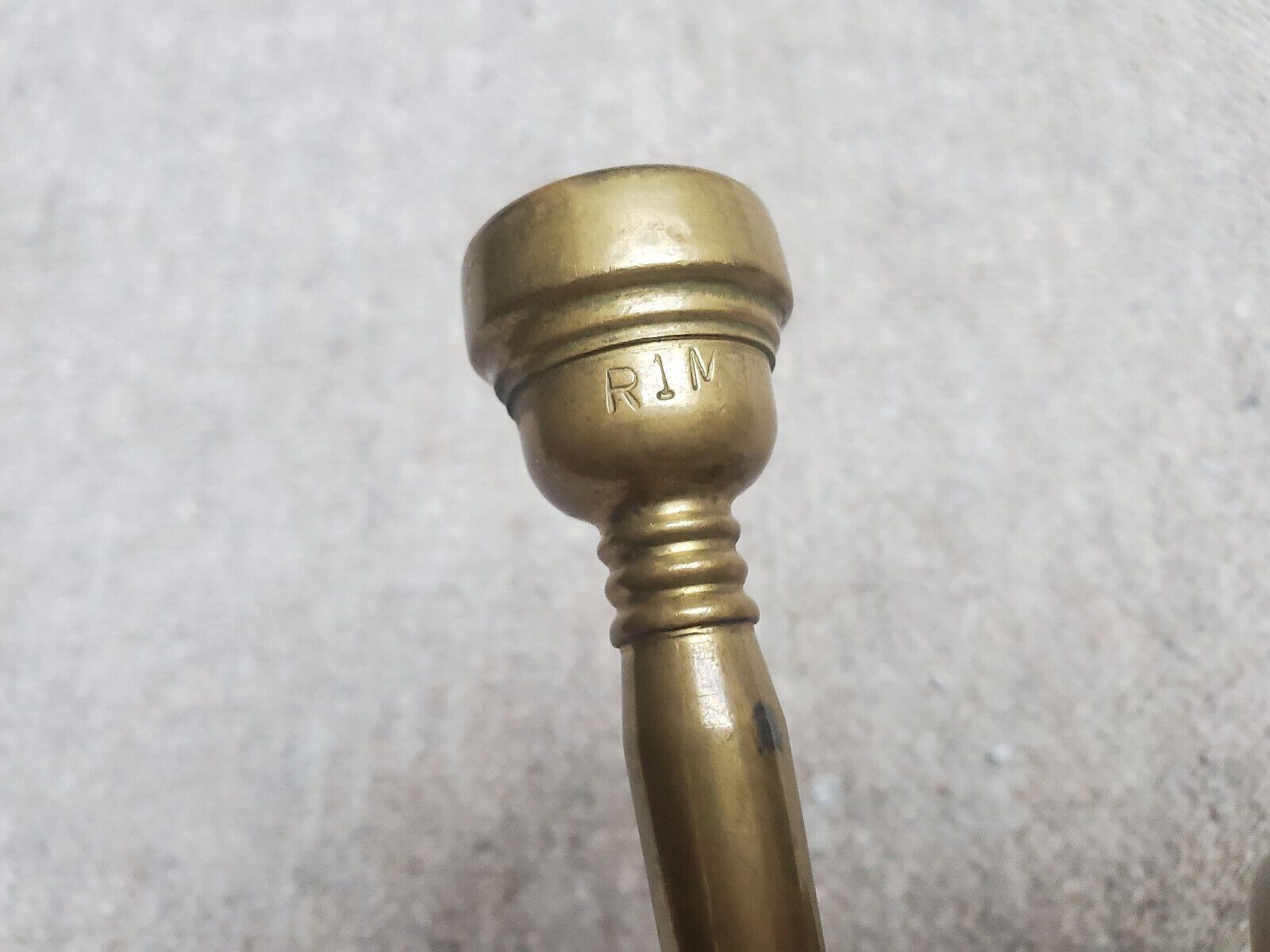
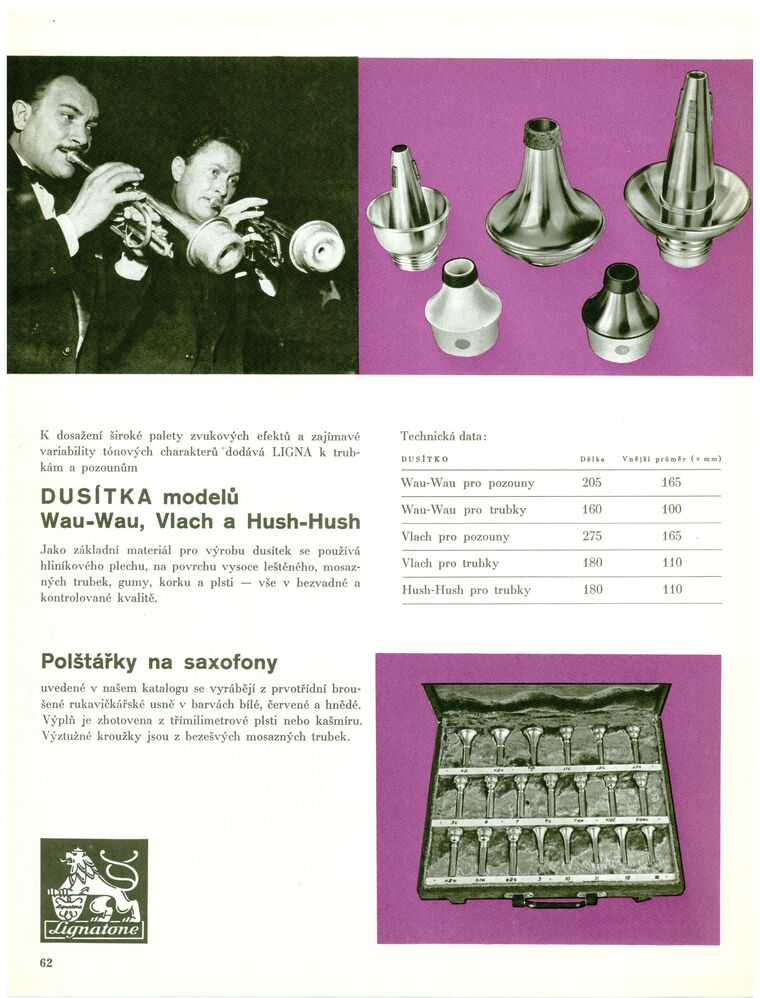
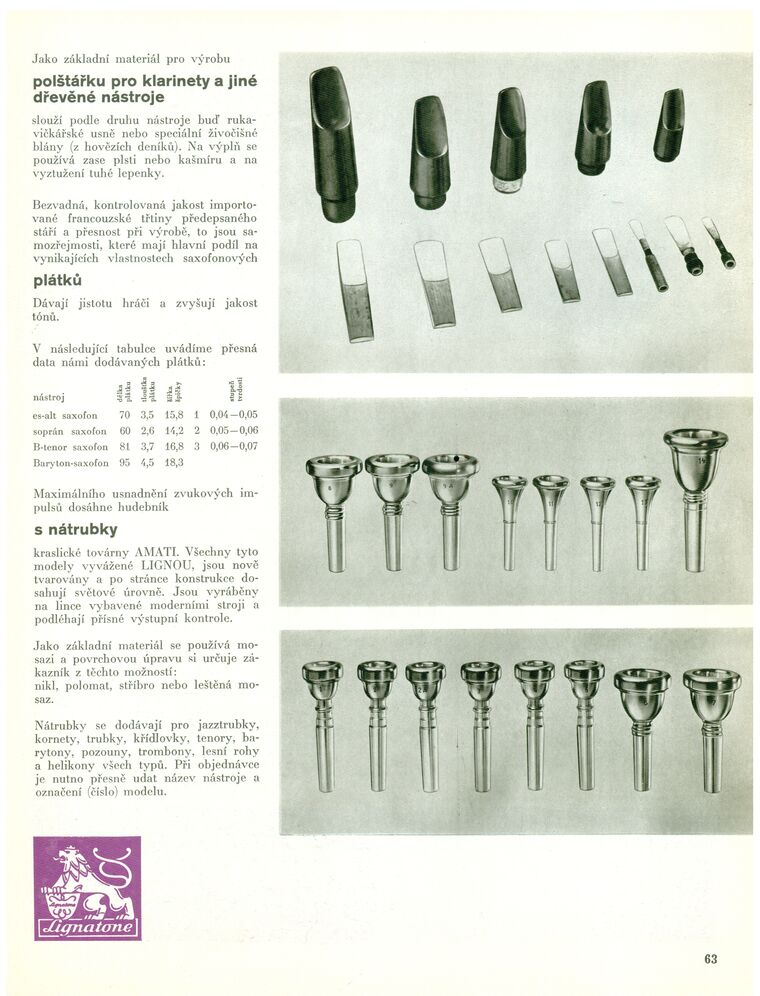
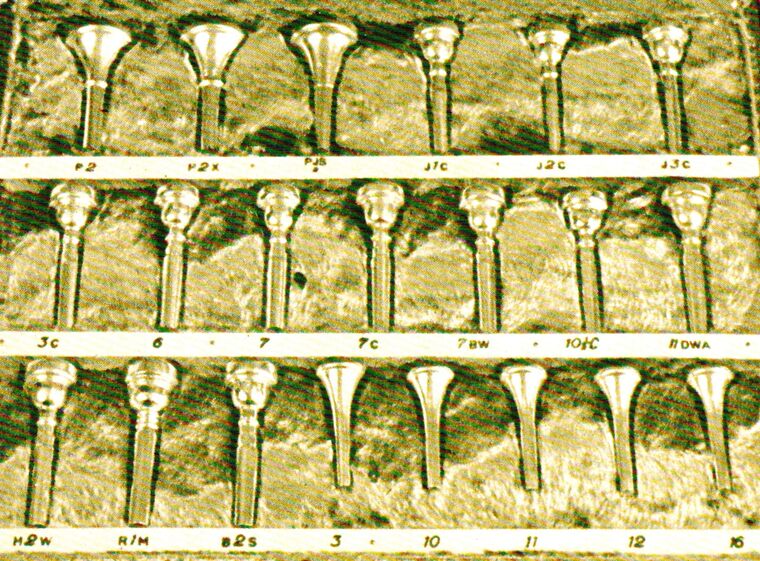
-
RE: Amati-Kraslice - the ones we love to hate?posted in Historical Database
@zetka said in Amati-Kraslice - the ones we love to hate?:
@ConnDirectorFan All given links contains quite complete and really invaluable material, because even in Amati itself they do not collect those old paper history prospects from communist era, so unfortunately you can not dig any more information about certain model from the old production there. It is very evident, that the export of AMATI musical instruments was very important for the company and the state itself as a source of foreign currency, which was a great need.
That was the goal! I agree with everything you said; their current US distributor has found that Amati have a clean slate every decade or so, leading to discontinuity we see here. The hard-currency export mission outweighed the documentation, it seems, as only two brochures had censorial marks indicating the year...! Amati-Kraslice, 1976 per censorial mark [scans] was one I forgot to include, but it establishes a hard date for obscure variations.
-
RE: Amati-Kraslice - the ones we love to hate?posted in Historical Database
So now it's possible to cross-reference models with the catalogs! There are plenty of oddballs that don't quite conform [mostly early models], but it's now easy to see that the infamous "Conn Director grip ring" basic stencil is the Lignatone 2400 or 2401, later Amati-Kraslice 2440.
Bell garlands vary from the smaller ones on early Consul 2360 and Lignatone/Amati 2404, the Supertone 2503/2543 with a large garland, the flat-rim 2444 often co-labeled Bohland & Fuchs, the roll-past rim Arioso Super B-2580 [like the Buffet/Evette horns made in Germany], etc.
Cornets can be linked to the long-model 1200/B-1037, mid-length 1210/1250, shorter 1900/1910/B-1040, "Wonderphone"/"Connquest" tuning-bell 2551/B-1038, and of course the pocket cornet 200P, later B-1041/ACR-241.
Flugelhorn is usually 226... -
Conn & more engineering spec sheet free-for-allposted in Historical Database
https://drive.google.com/drive/folders/1BqTvh7RmRAXFfp3r60yVpTWDYBpFQ9-r contains a giant collection of scans and photographs of engineering vellum sheets from none other than C. G. Conn Ltd. - sadly only a fraction of the ones ever produced/used, but still useful.
They were scanned on loan from a former UMI employee, hence the Benge/King bits, and there are a few hundred more that are too large for standard tabletop scanners that we're working on...
Why are they usually PDFs? Client wanted PDFs. I redid several as PNG or bitmap at different resolutions where potentially useful.It's a free-for-all because there is virtually no organization. Google has been performing optical character recognition every time something is uploaded, so if using a Google account, you should be able to search by topic/name/etc. Not perfect, but helpful somewhat.
The folders and subfolders are references to what each container had, so the Black Crate had hanging folders corresponding to sheet numbers, or the Market Day bag had a bunch of loose sheets presented in order, etc."Fun" items include official dates when certain designs were discontinued, a trombone date code table, 16A designs from the 1960s that were shelved, subcontracted to Yamaha as the 19A/21A, then became the 16A in 1974, a 25A/25B "Director" which was basically a 77B parts-horn, various Navy compass parts from WW2, a possible Czech spy sending stuff to Amati-Kraslice [kidding about that]...
-
RE: Amati-Kraslice - the ones we love to hate?posted in Historical Database
and some newer catalog/part items as well:
Repair parts: https://drive.google.com/drive/folders/1eufgahpSJ5qrHajU5hhgybjsw1v8Z0Ku?usp=drive_link2021: https://amati.cz/images/catalogue-download/amati-catalogue.pdf and https://www.vfcerveny.cz/images/catalogue-download/vfcerveny-cataloque.pdf
@ConnDirectorFan said in Amati-Kraslice - the ones we love to hate?:
@ConnDirectorFan Most of the items here are on Horn-u-Copia in the Library, so I linked their OneDrive PDFs here for the smallest file size [and the original Google Drive scans where applicable]:
https://horn-u-copia.net/library.shtml
Amati-Kraslice piston, ca. 1970s-1980s [scans]
Amati-Kraslice rotary, ca. 1970s-1980s [scans]
Amati-Kraslice, ca. 1976 [scans]
Amati-Kraslice, ca. 1968-1970 [scans]
Amati-Kraslice, 1976 per censorial mark [scans]
Amati-Kraslice, ca. 1967 [scans]
Artia/Amati-Kraslice piston trumpets, ca. 1967 [scans]
Lignatone/Amati-Kraslice, ca. 1964 [scans]
Lignatone 351/Amati-Kraslice, ca. 1953
Lignatone 352/Amati-Kraslice, ca. 1954 [scans]
Ligna Spanish export [Lignatone]/Amati-Kraslice, ca. 1949 [scans] courtesy Gerard Westerhof -
RE: Amati-Kraslice - the ones we love to hate?posted in Historical Database
@ConnDirectorFan Most of the items here are on Horn-u-Copia in the Library, so I linked their OneDrive PDFs here for the smallest file size [and the original Google Drive scans where applicable] - hover over the text to see the link:
https://horn-u-copia.net/library.shtml
Amati-Kraslice piston, ca. 1970s-1980s [scans]
Amati-Kraslice rotary, ca. 1970s-1980s [scans]
Amati-Kraslice, 1976 per censorial mark [scans]
Amati-Kraslice, ca. 1976 [scans]
Amati-Kraslice, ca. 1968-1970 [scans]
Amati-Kraslice, ca. 1967 [scans]
Artia/Amati-Kraslice piston trumpets, ca. 1967 [scans]
Lignatone/Amati-Kraslice, ca. 1964 [scans]
Lignatone 351/Amati-Kraslice, ca. 1953
Lignatone 352/Amati-Kraslice, ca. 1954 [scans] - has a censorial mark indicating 1954
Ligna Spanish export [Lignatone]/Amati-Kraslice, ca. 1949 [scans] courtesy Gerard Westerhofand a 1975 EMI/Rosetti catalog showing Corton brasswinds and more
-
RE: Amati-Kraslice - the ones we love to hate?posted in Historical Database
And here's another one - ca. 1991 production ACR-241 pocket cornet with tuning shanks, though the serial itself makes me wonder if the parts were originally manufactured much earlier...
-
RE: Amati-Kraslice - the ones we love to hate?posted in Historical Database
@zetka Well I'm very glad to have a Czech speaker to help demystify some of this! In the last few years [really in the last 8 months] we were able to get a large collection of Amati catalogs ranging from the 1960s to 1980s, and while they probably aren't a complete set, they definitely shed light on what was insanely confusing for so long. I'll add the links momentarily
-
RE: Taiwanese Trumpetsposted in Bb & C Trumpets
@havetrumpet I was told the same...things about how to care for it/break it in, but honestly it was moot. It took a lot more work than just that to get the Jupiter valves working. I bought it using insurance money [and the repairs were under warranty] so I can't complain too much, but the demo I had played years prior had been set up better.
The Liberty just feels easier to play - the blow isn't significantly different [I don't really notice a difference since they're not as extreme as Conn 6B and 5A], but the response is quicker. The Ingram is a bit more predictable, more balanced, but the Liberty's brightness and high register zing is hard to beat! On the other hand, I've been using an Amati-Kraslice OEM "Arioso Super" [model B-2580] a lot more, too.
The Arioso is a bit mechanically clunky but relatively open, ML-ML+ ish
Hopefully that answers the question [best way I can put it] -
RE: Taiwanese Trumpetsposted in Bb & C Trumpets
@havetrumpet Interesting; thanks. The only 1600 series Jupiter I've played is the 1600I Roger Ingram trumpet. Nice player, great high register and projection, but the horn brand-new came with gritty valves [good thing it was insurance money paying!] that hung up a lot. After getting them lapped and cleaned, they work all right - I prefer my King Liberty or Conn 61B a bit more at times for their brightness, but the 1600I isn't too bad.
-
RE: Taiwanese Trumpetsposted in Bb & C Trumpets
@havetrumpet Is Harmonie made with their own valves, or do they source from another maker? I'll see if I can find anything on them
